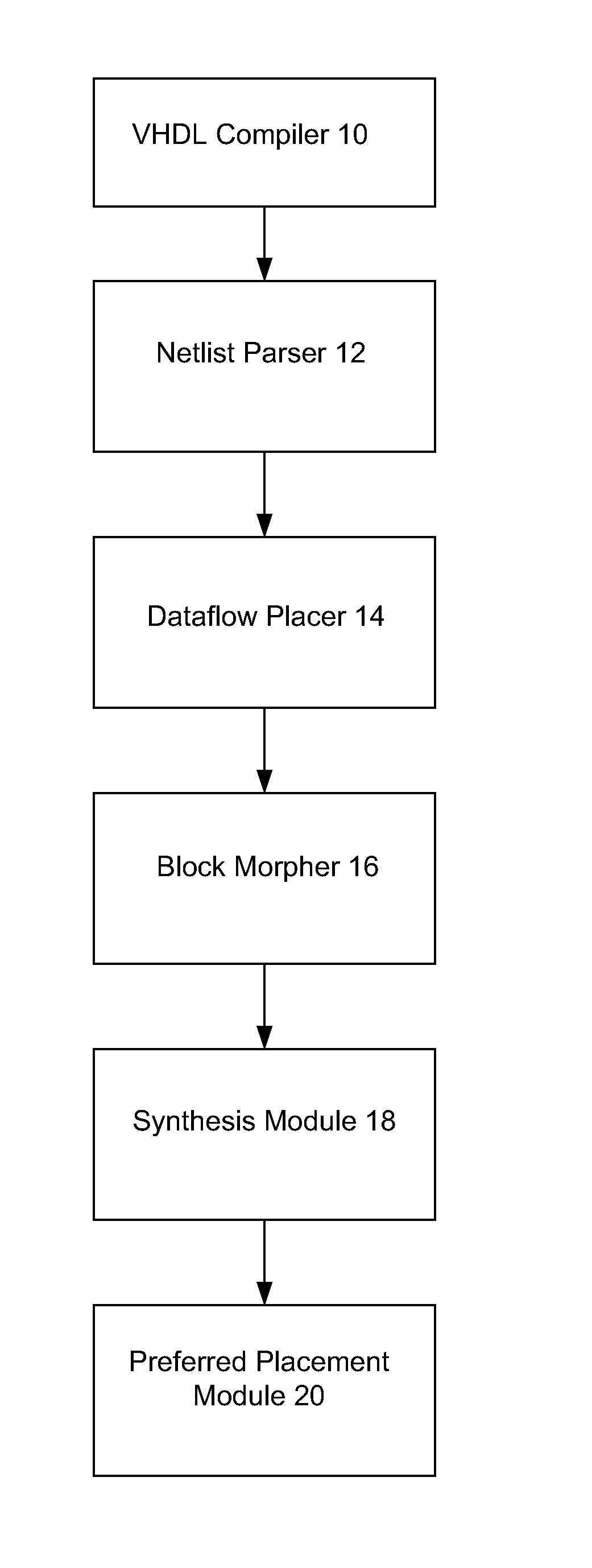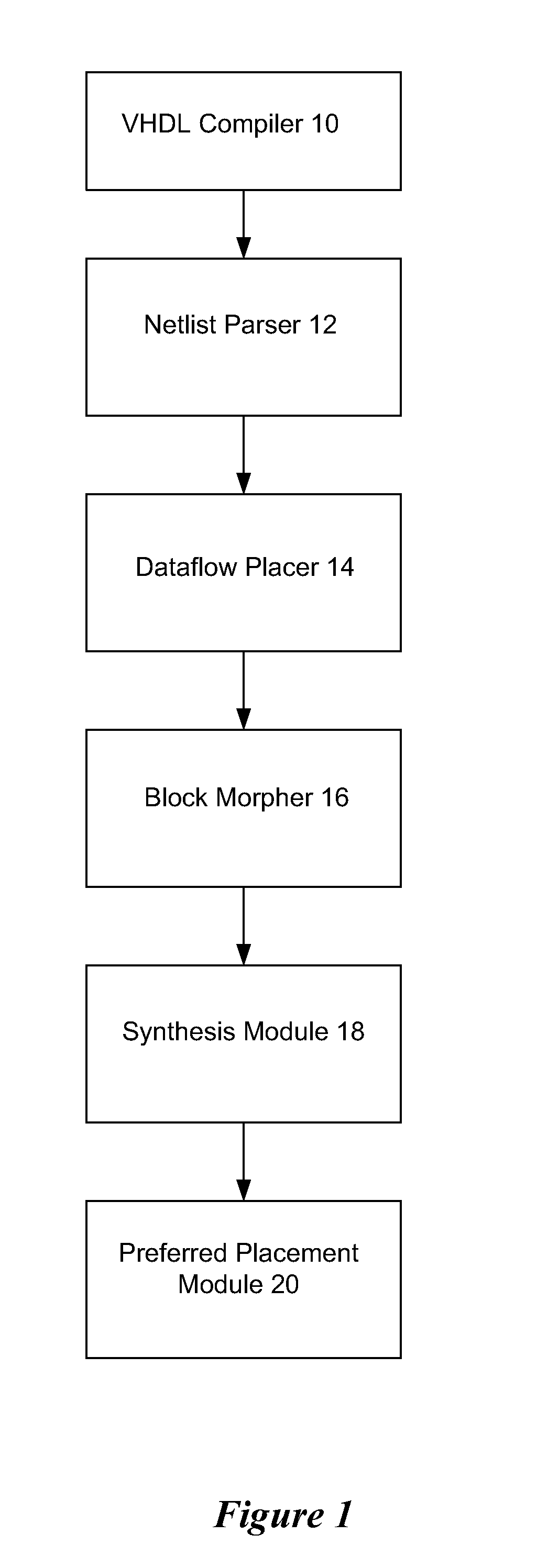System and Method for Placing Integrated Circuit Functional Blocks According to Dataflow Width
- Summary
- Abstract
- Description
- Claims
- Application Information
AI Technical Summary
Benefits of technology
Problems solved by technology
Method used
Image
Examples
Embodiment Construction
[0016]A system and method provides automated detection and dynamic handling of regular structures of macroblocks within an integrated circuit design. Placement information is added to a register-transfer level design of an electronic circuit by defining a set of functions as box usage elements, defining a minimum dataflow width, tagging the defined usage elements in the design if the number of usage element input signals is greater than the minimum dataflow width, and morphing the tagged usage elements to adapt aspect ratio and total area for use in the electronic circuit. A first set of instructions from a computer readable medium, such as nonvolatile memory, parses a netlist design to tag dataflow blocks, such as registers, multiplexers, ecc, parity, and buffer blocks, with keywords that are readable during synthesis. A second set of instructions from a computer readable medium builds dataflow blocks out of standard library cells that are morphed to adapt to desired aspect ratio a...
PUM
 Login to View More
Login to View More Abstract
Description
Claims
Application Information
 Login to View More
Login to View More - R&D
- Intellectual Property
- Life Sciences
- Materials
- Tech Scout
- Unparalleled Data Quality
- Higher Quality Content
- 60% Fewer Hallucinations
Browse by: Latest US Patents, China's latest patents, Technical Efficacy Thesaurus, Application Domain, Technology Topic, Popular Technical Reports.
© 2025 PatSnap. All rights reserved.Legal|Privacy policy|Modern Slavery Act Transparency Statement|Sitemap|About US| Contact US: help@patsnap.com



